Outdoor dance classes are a great way to enjoy movement and fresh air, but they come with potential risks. Accidents can happen, and injuries can occur. As a responsible dance practitioner, it’s important to prioritize movement health, injury prevention, and emergency preparedness by having a well-equipped first aid kit at hand.
First aid kits are vital in managing minor accidents and ensuring the well-being of dancers during outdoor dance classes. These kits can help prevent injuries and provide immediate care if necessary. In this article, we will explore the importance of dance safety kits, their essential components, dance injury prevention tips, first aid tips for outdoor dance classes, and much more.
Key Takeaways:
- Having a well-equipped first aid kit is vital for maintaining movement health in outdoor dance classes.
- Dance safety kits can help prevent injuries and provide immediate care if necessary.
- Dance injury prevention tips, first aid tips, and routine health maintenance are essential for ensuring the overall well-being of dancers.
Understanding the Importance of Dance Safety Kits
Dance safety kits are crucial in ensuring the well-being of dancers during outdoor classes. With the unpredictability of outdoor conditions, a dance safety kit can provide the necessary supplies to manage minor accidents and injuries.
Outdoor dance safety is a top priority, and providing a well-equipped dance safety kit can go a long way in preventing injuries. An ideal kit should contain items such as bandages, antiseptic wipes, ice packs, scissors, and any other supplies necessary for treating minor injuries in an outdoor environment.
Having a dance safety kit on hand can also provide peace of mind to instructors, knowing that they are prepared for potential emergencies. By prioritizing dance class safety, instructors can create a safe and comfortable environment for their dancers to learn and perform.

Dance safety kits are critical for outdoor dance classes
Components of a Dance First Aid Kit
When it comes to outdoor dance classes, being prepared with a well-stocked dance first aid kit is essential. A dance emergency kit is designed to help you manage minor injuries and medical issues that might arise during your dance classes. Here are some dance first aid essentials that you should consider including in your kit:
| Item | Description |
|---|---|
| Bandages | Various sizes of adhesive bandages for covering small cuts and scrapes. |
| Antiseptic Wipes | Wipes to clean and disinfect skin before treating wounds. |
| Gauze Pads | Gauze pads to apply pressure and stop bleeding. |
| Ice Packs | Ice packs for reducing swelling resulting from falls or minor injuries. |
| Scissors | To cut bandages and clothing in case of an emergency. |
| Gloves | Disposable gloves to prevent contamination and to protect yourself and the injured dancer. |
| Tweezers | To remove foreign objects such as splinters. |
| Pain Relief Medication | Over-the-counter pain relief medication for any aches or pains. |
| Emergency Blanket | A lightweight, compact blanket to keep an injured person warm and dry. |
These dance first aid supplies are specifically tailored to outdoor dance classes, where injuries are more likely to occur. Including these items in your dance first aid kit can help you manage any minor emergencies that may arise during your dance practice.
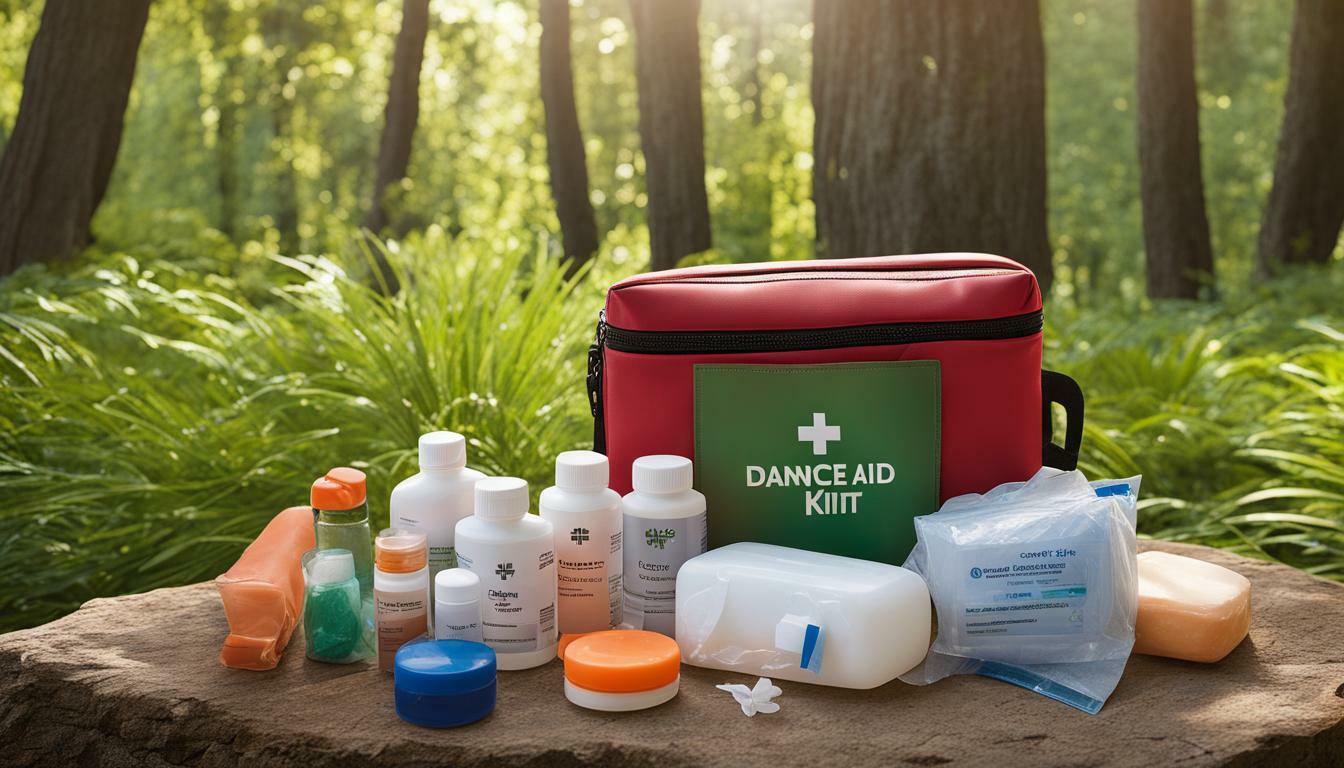
Understanding Dance Injury Prevention
Dance injury prevention is essential for maintaining movement health during outdoor dance classes. Proper warm-up techniques and stretching exercises are crucial for preventing injuries. Dancers should be advised to maintain correct posture and alignment and wear appropriate footwear to avoid any unnecessary stresses on their bodies. Some simple tips for preventing injuries include:
- Gradually increasing intensity and duration of dance practice to help acclimate muscles
- Performing conditioning exercises to help build strength and flexibility in key muscle groups
- Practicing good nutrition and hydration habits to aid in muscle recovery and overall physical health
Furthermore, it is important to recognize that dancers may be especially susceptible to certain types of injuries, such as sprains, strains, and blisters. By being aware of these risks and taking the necessary steps to prevent them, dancers can stay safe and healthy during outdoor dance classes.
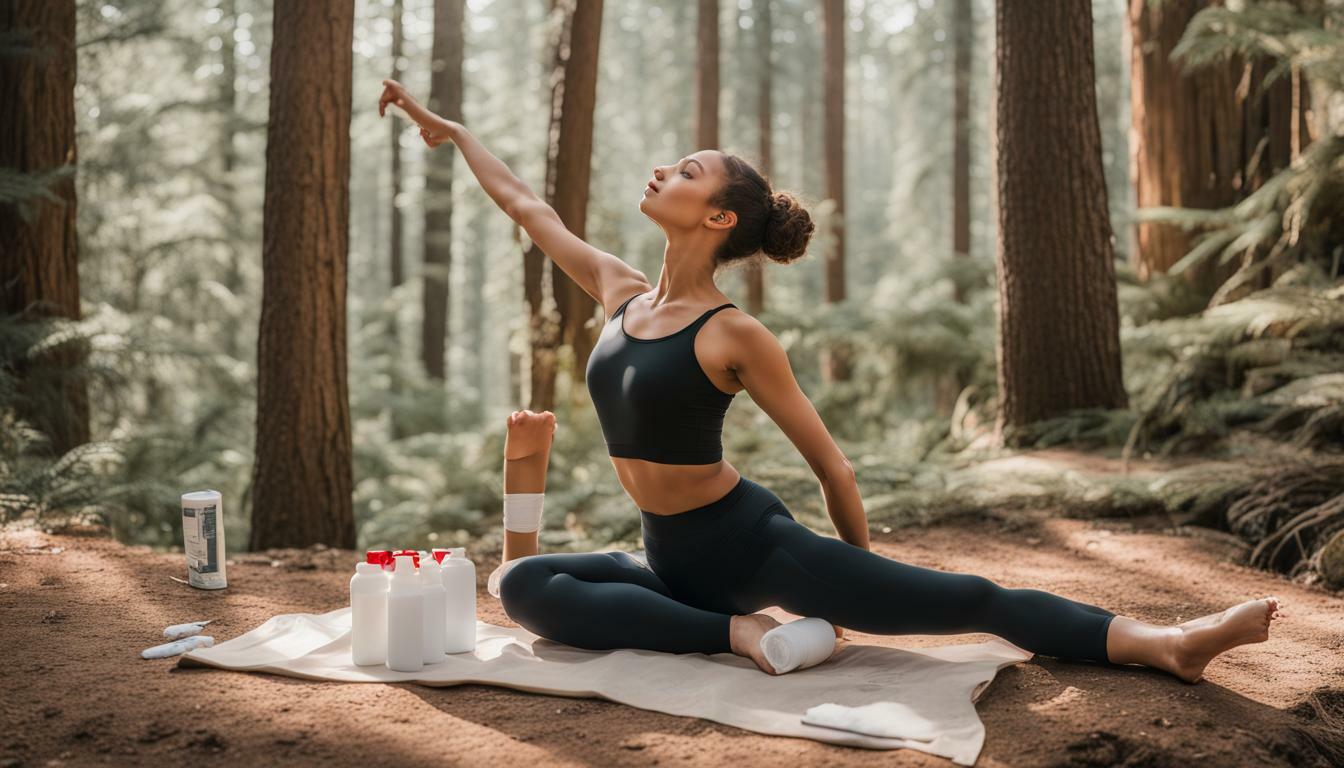
Image alt text: Dance injury prevention
Managing Dance Injuries in Outdoor Settings
Accidents can happen, even in the most carefully planned outdoor dance classes. It’s essential to be prepared to manage dance injuries to ensure the well-being of all dancers. Here are some steps to take when a dancer gets injured:
- Assess the situation: The first step is to assess the severity of the injury. Determine if it’s a minor injury that can be treated on-site or a major injury that requires professional medical attention.
- Provide first aid treatment: If the injury is minor, provide first aid treatment immediately. This may include cleaning and dressing wounds, applying ice packs to reduce swelling, or giving pain relievers if necessary.
- Seek professional medical help: If the injury is severe or requires medical attention, seek professional medical help immediately. Call an ambulance or take the injured dancer to the nearest hospital or clinic.
- Create a safe environment: Once the injured dancer has been taken care of, create a safe environment for the rest of the dancers to continue the class. Clear the area where the injury occurred, and ensure that all equipment and materials are safe to use.
Remember, prevention is always better than cure. Ensure that all dancers are properly warmed up and that each class is tailored to the dancers’ skill levels. By taking the necessary precautions and being prepared, you can ensure a safe and enjoyable dance experience for everyone.
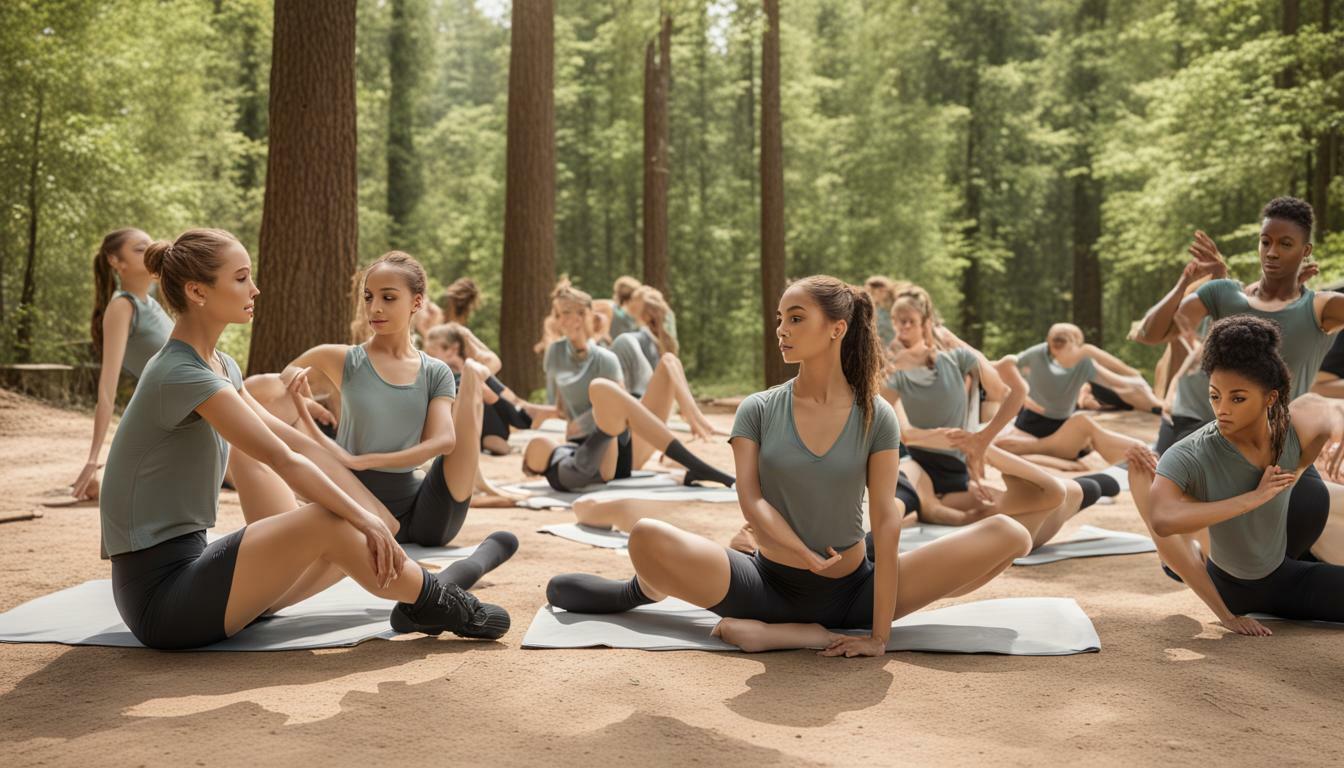
Essential First Aid Tips for Outdoor Dance Classes
Outdoor dance classes can be a fun and energising way to exercise, but they also come with their own unique safety challenges. Here are some essential first aid tips to keep in mind to ensure the health and safety of all dancers:
- Stay hydrated: Drinking plenty of water before, during, and after class is essential for preventing dehydration. Remember to take frequent water breaks, especially on hot days.
- Warm up: Always begin class with a proper warm-up to prepare the body for the physical demands of dance. This can help prevent common injuries like sprains and strains.
- Wear appropriate footwear: Choose shoes that are specifically designed for dance and provide adequate support and traction for outdoor terrain.
- Use sunscreen: Protect your skin from harmful UV rays by applying sunscreen with an SPF of at least 30 before class.
- Be prepared: Always carry a well-stocked dance first aid kit and know how to use its contents. This can help you manage minor injuries and accidents if they occur.
By following these essential first aid tips, you can help maintain the health and safety of all dancers in outdoor dance classes.
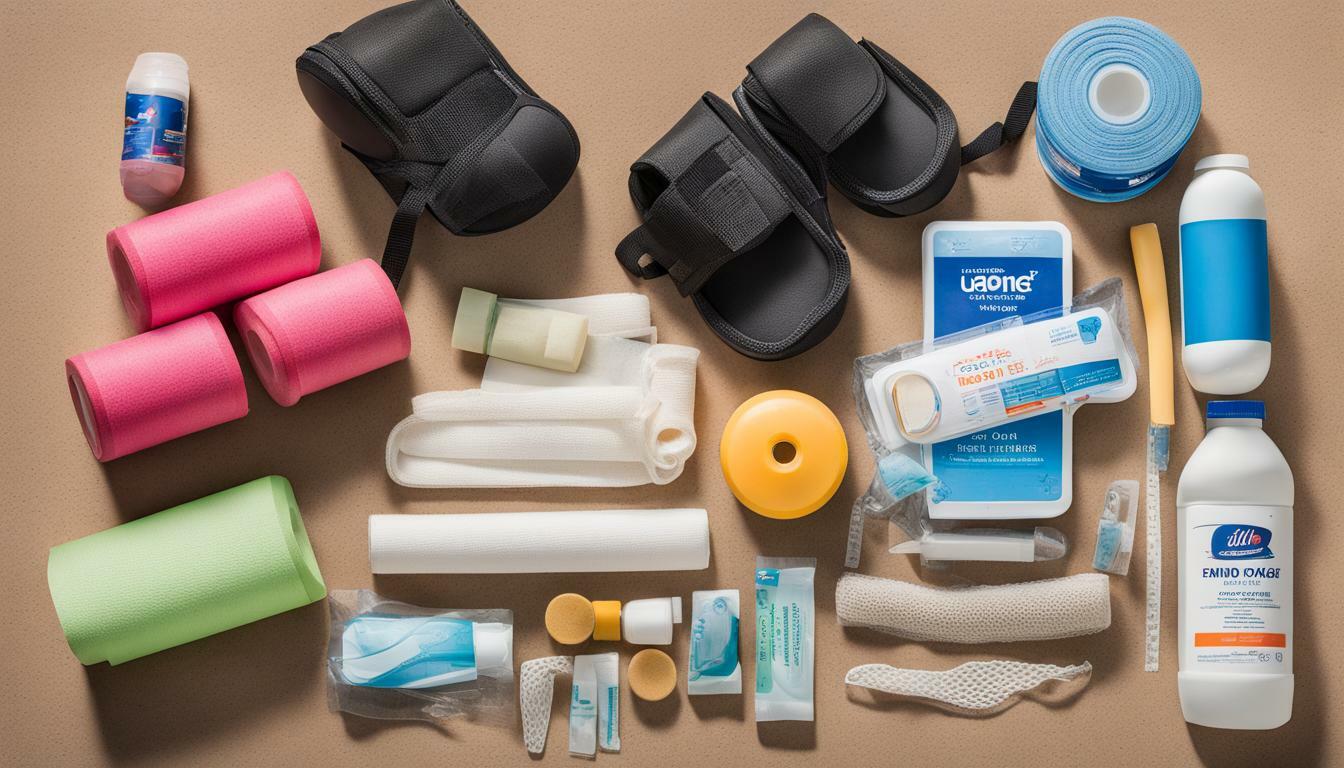
The Role of First Aid Training for Dance Instructors
As a dance instructor, you play a critical role in ensuring the safety and well-being of your students during outdoor dance classes. Proper first aid training can equip you with the necessary skills to respond to emergencies and provide immediate care in case of injuries or accidents.
First aid training can prepare you to recognize and respond to various medical situations, including minor injuries, sprains, strains, and more severe conditions like seizures or heart attacks. With adequate training, you can also learn how to use a dance safety kit effectively and manage emergency situations.
Additionally, First Aid training can help you create a safe environment for your dancers. You can learn techniques to identify potential hazards and implement appropriate safety measures, reducing the risk of accidents and injuries during outdoor dance classes.
Therefore, we highly recommend that dance instructors receive proper first aid training to promote a safe dance environment and minimize the risk of injury among students.
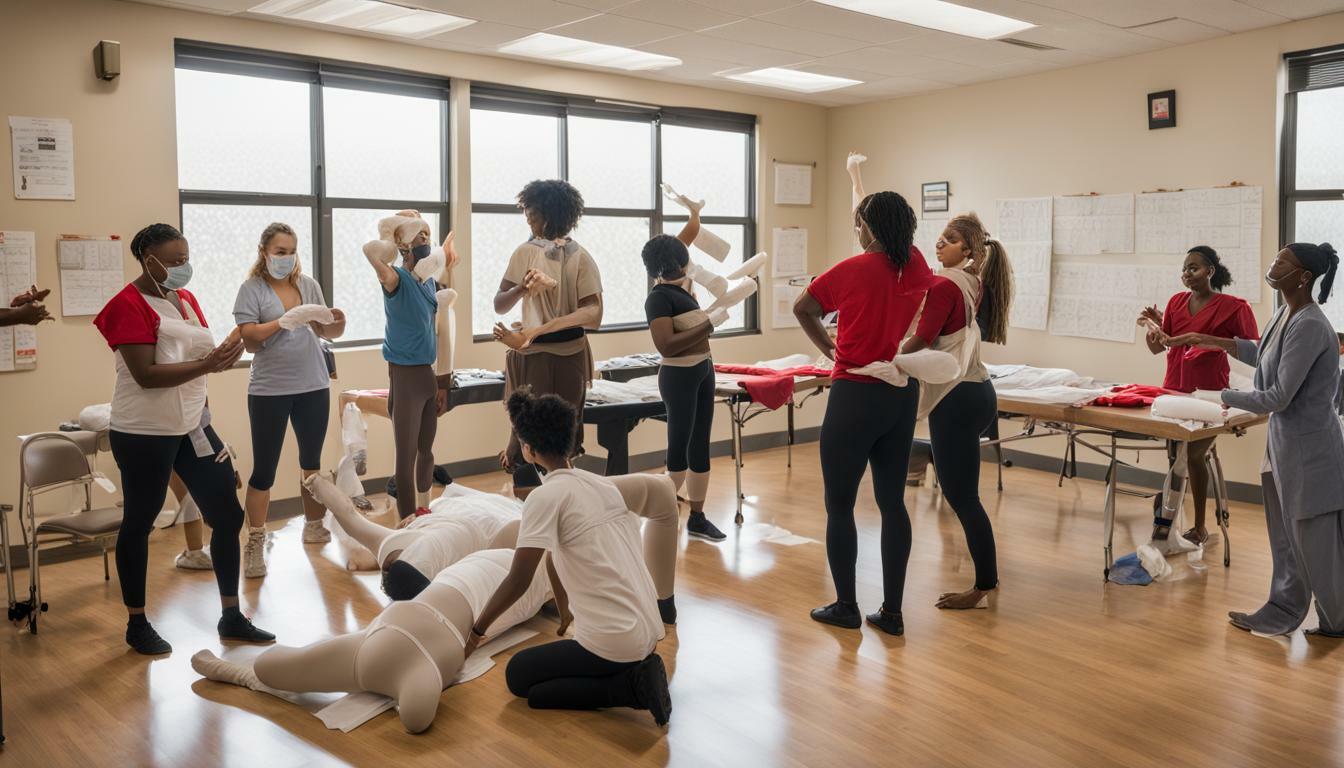
Ensuring Routine Health Maintenance in Outdoor Dance Classes
While having the right dance first aid supplies on hand is essential for outdoor dance classes, ensuring routine health maintenance is just as important for the well-being and performance of dancers. Movement health is a holistic concept that includes physical, mental, and emotional well-being, and it should be a top priority for both dancers and instructors.
One of the most crucial aspects of routine health maintenance is hydration. Dancers should drink plenty of water before, during, and after class to prevent dehydration, which can negatively impact their performance and increase the risk of injury. It’s also important to consume foods that provide the necessary nutrients and energy for dancing, such as proteins, complex carbohydrates, and healthy fats.
Adequate rest is another crucial factor in maintaining movement health. Dancers should aim for at least 7-8 hours of sleep per night to allow their bodies to recover and recharge. Additionally, regular check-ups with healthcare professionals can help identify and address any underlying health issues that could affect a dancer’s performance.
As an instructor, it’s important to encourage your students to prioritize their movement health and provide guidance on how to do so. Incorporate warm-up and cool-down exercises into your classes to prevent injury and promote flexibility. You can also provide resources, such as informational handouts or online articles, to educate your students on the importance of routine health maintenance.
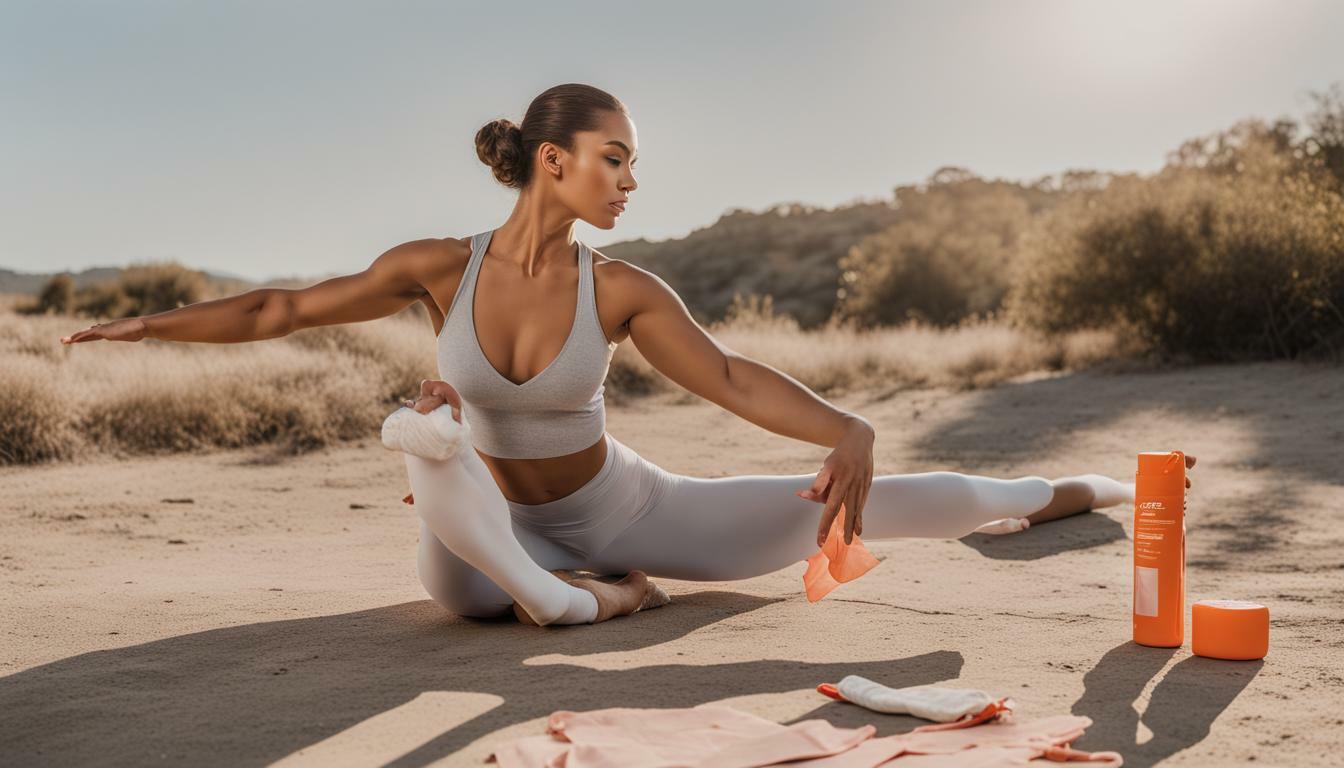
Ultimately, prioritizing routine health maintenance in outdoor dance classes can help dancers feel their best and perform at their highest level. By combining proper hydration, nutrition, rest, and ongoing check-ups with preventative measures and emergency preparedness, dancers can enjoy all the benefits of outdoor dance while keeping themselves safe and healthy.
Choosing the Right First Aid Kit for Outdoor Dance Classes
When it comes to choosing a first aid kit for outdoor dance classes, it’s important to consider several factors to ensure that the kit is well-equipped for any potential emergencies.
First, consider the size of your class. If you have a large group, you may need a more extensive kit with additional supplies. Additionally, think about the location of your class. If you’re teaching in a remote area, it’s important to have a kit that contains items such as a snake bite kit or emergency whistle.
Next, think about the specific needs of your dancers. Do any of your students have allergies or medical conditions that require special attention? If so, make sure that your kit contains any necessary medications or supplies.
Finally, consider the type of dancing that your class will be doing. For example, if you’ll be teaching outdoor ballet classes, you may need to have extra supplies such as blister pads or foot cream.
By taking the time to carefully consider these factors, you can choose the right first aid kit for your outdoor dance class and ensure that you’re prepared for any potential emergencies that may arise.
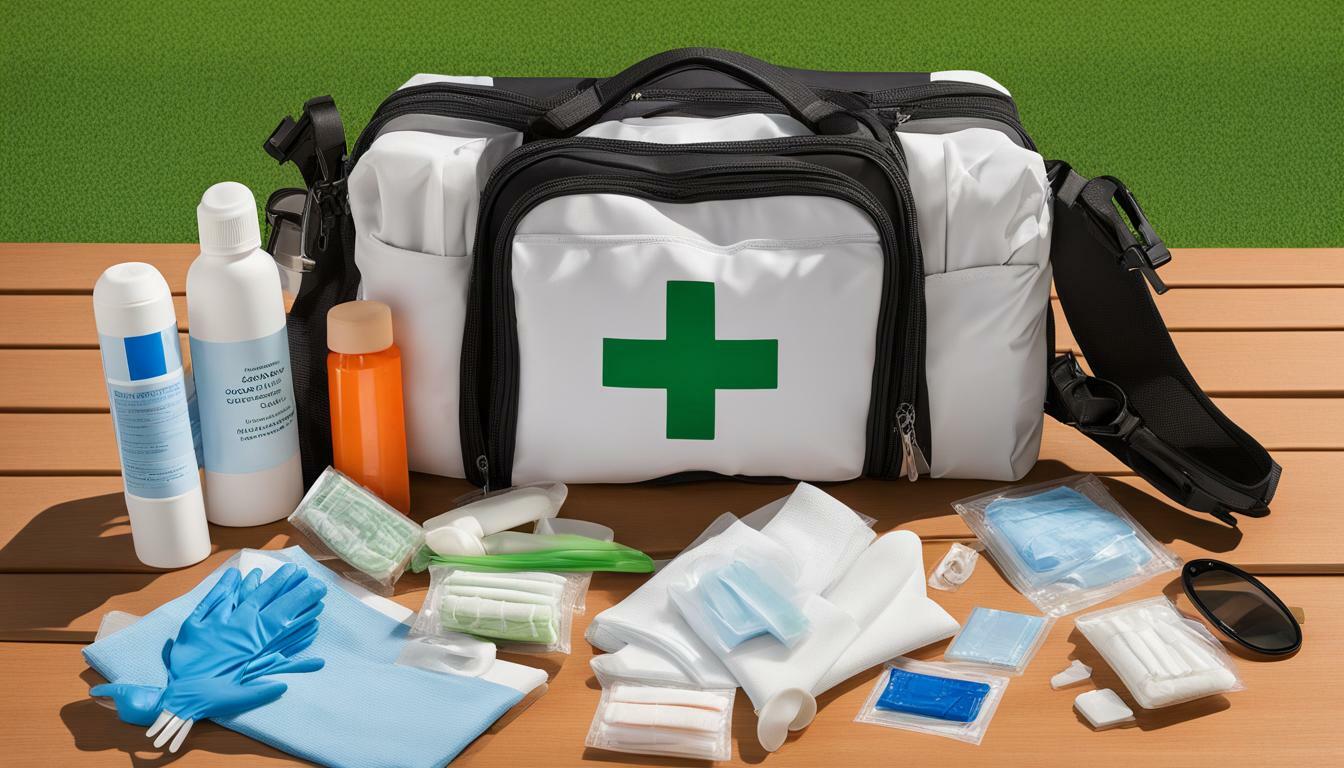
Maintaining and Updating Your Dance First Aid Kit
It is crucial to maintain and regularly update your dance first aid kit to ensure it remains well-equipped for any emergencies that may occur during outdoor dance classes. Here’s what you need to do:
| Step | Description |
|---|---|
| Step 1 | Check the expiration dates on all items in the kit, including medications, ointments, and bandages. Remove any expired items and replace them with new ones. |
| Step 2 | Restock your dance first aid kit with necessary supplies. Make sure you have enough bandages, antiseptic wipes, ice packs, scissors, and any other items that may be needed for treating minor injuries. |
| Step 3 | Review the contents of your kit to ensure it is suited to the specific needs of your outdoor dance class. Consider the ages and health conditions of your dancers and adjust your kit accordingly. |
| Step 4 | Store your dance first aid kit in a cool, dry place and keep it easily accessible during outdoor dance classes. |
Regular maintenance and updates to your dance first aid kit will ensure that you are well-prepared to handle any unexpected injuries or emergencies that may arise during your outdoor dance classes. By keeping your kit up-to-date, you can provide peace of mind to yourself, your students, and their families.
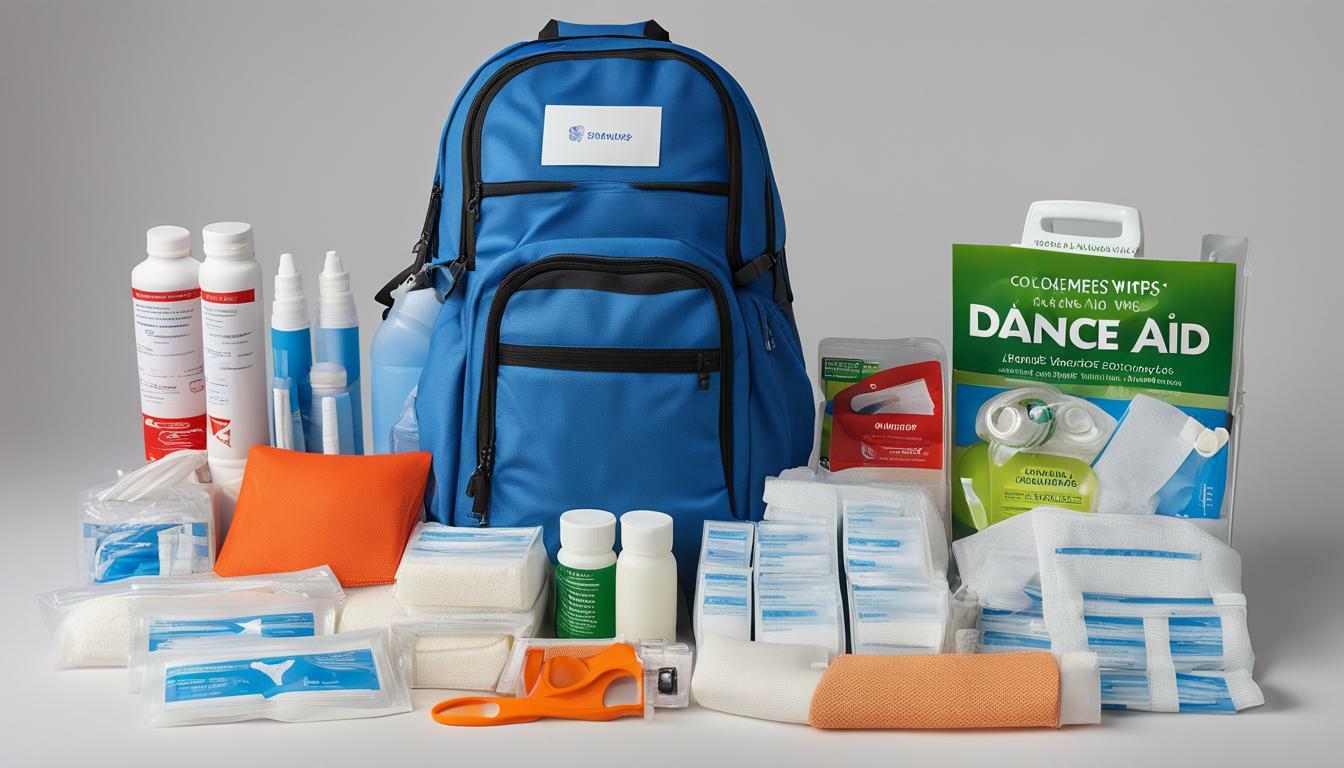
Conclusion
Ensuring movement health, injury prevention, and emergency preparedness should be a top priority for dance classes, especially when held outdoors. Having the right first aid kit can make all the difference in providing immediate care and managing potential emergencies.
By understanding the importance of dance safety kits and injury prevention techniques, dance instructors can create a safe and supportive environment for their students. Regular health maintenance and first aid training for instructors can also promote optimal performance and overall well-being.
When selecting and maintaining a dance first aid kit, it is essential to consider the specific needs of the dancers and the outdoor environment in which they will be performing. Regularly checking and restocking the kit will ensure that it remains well-equipped for any situation.
Overall, prioritising movement health, injury prevention, and emergency preparedness can help dancers to enjoy their outdoor classes safely and confidently.
